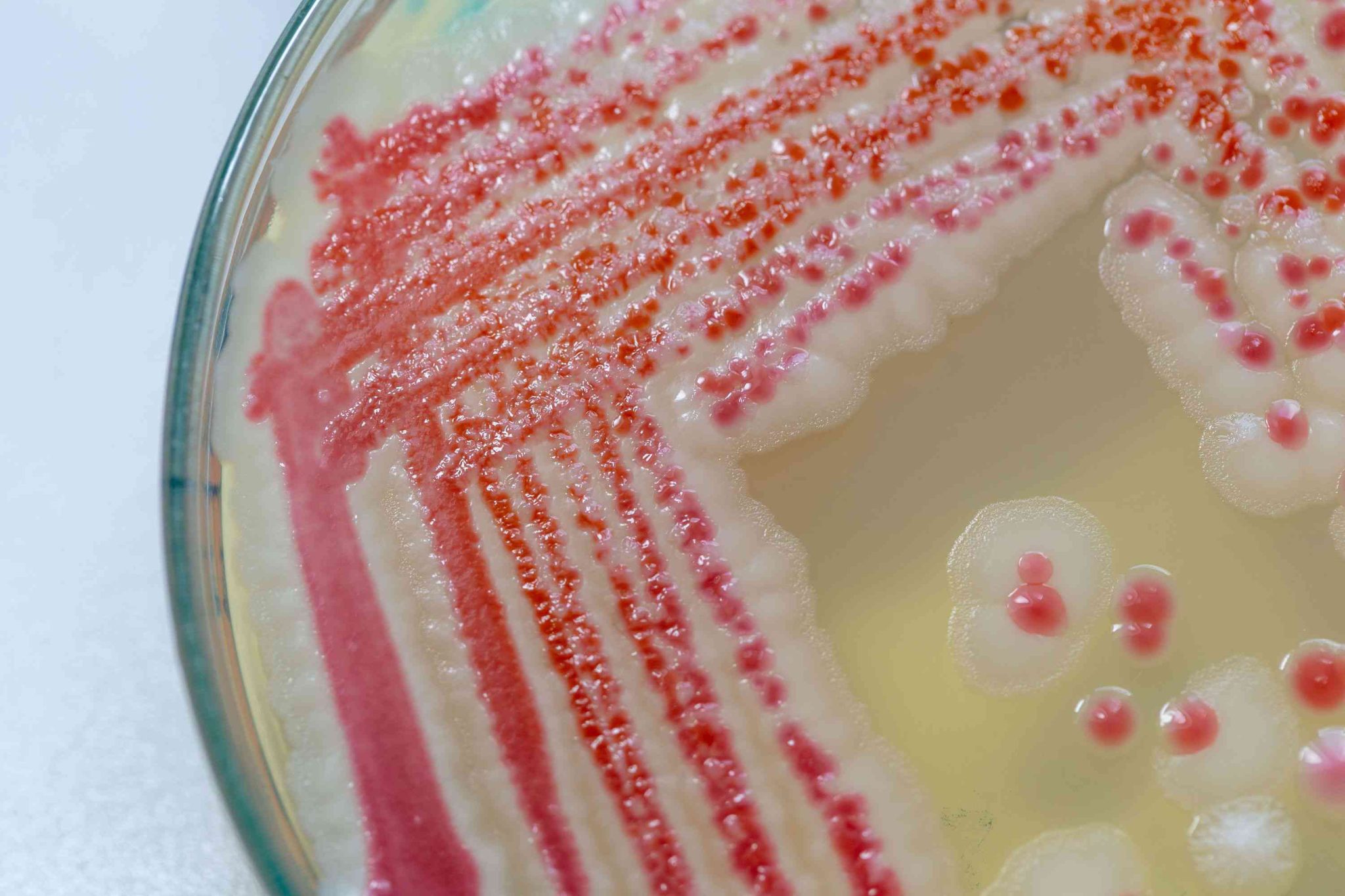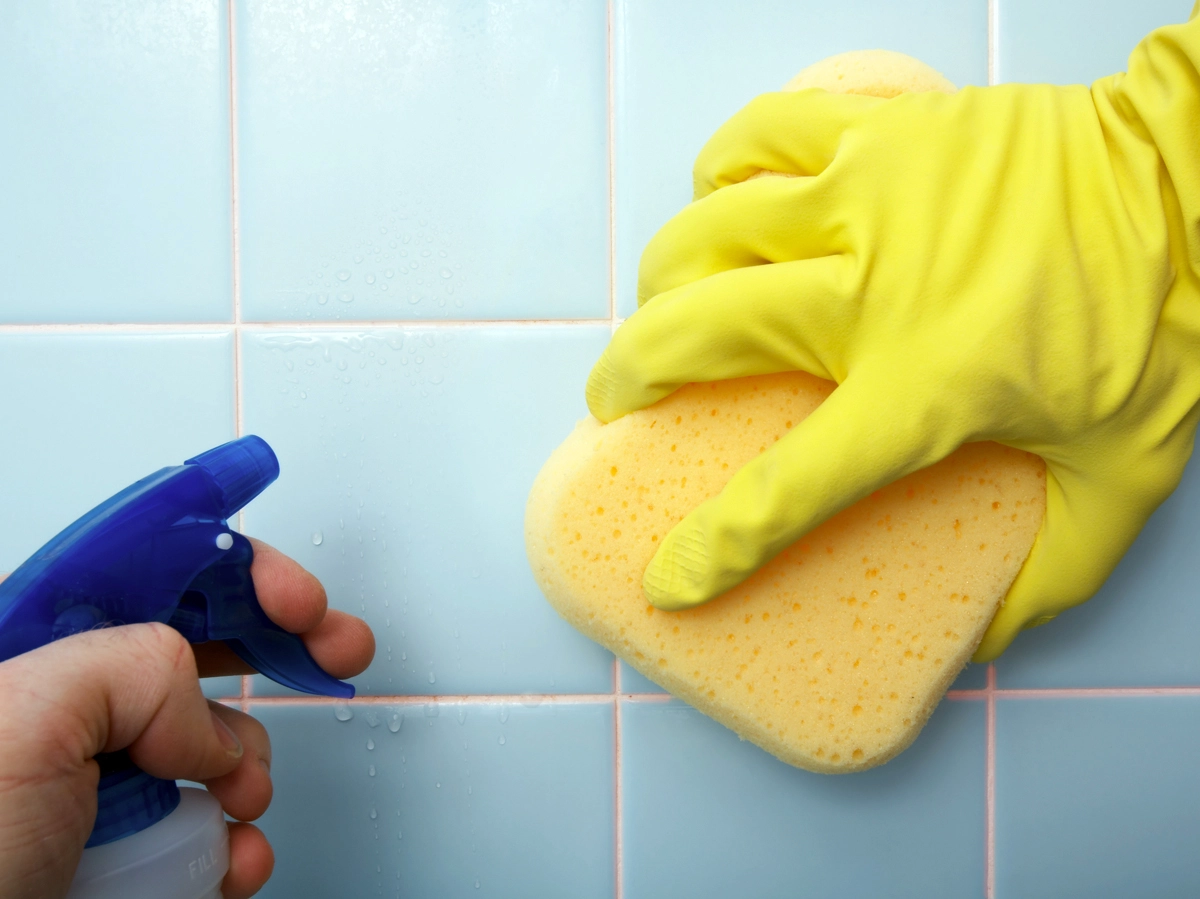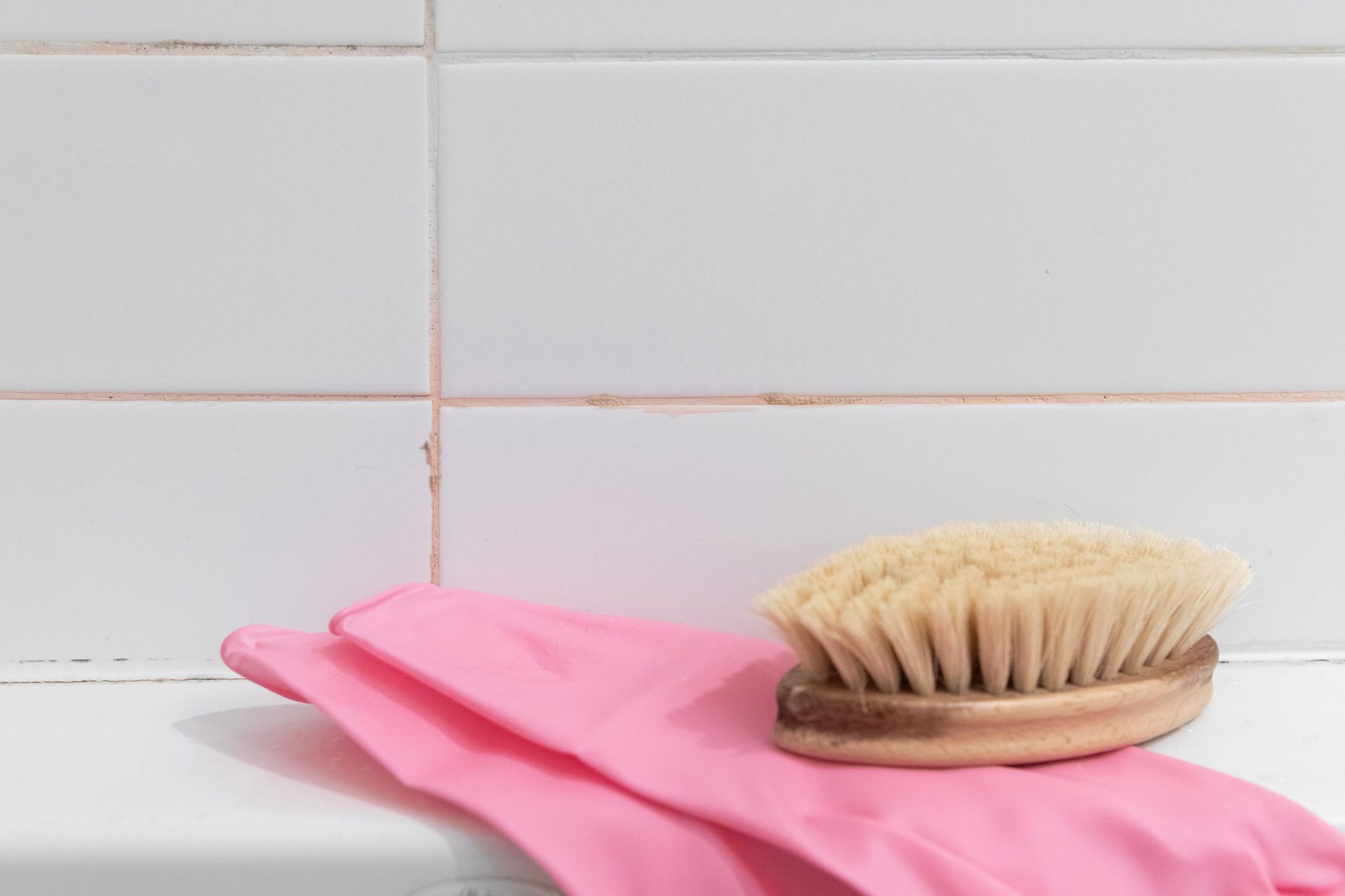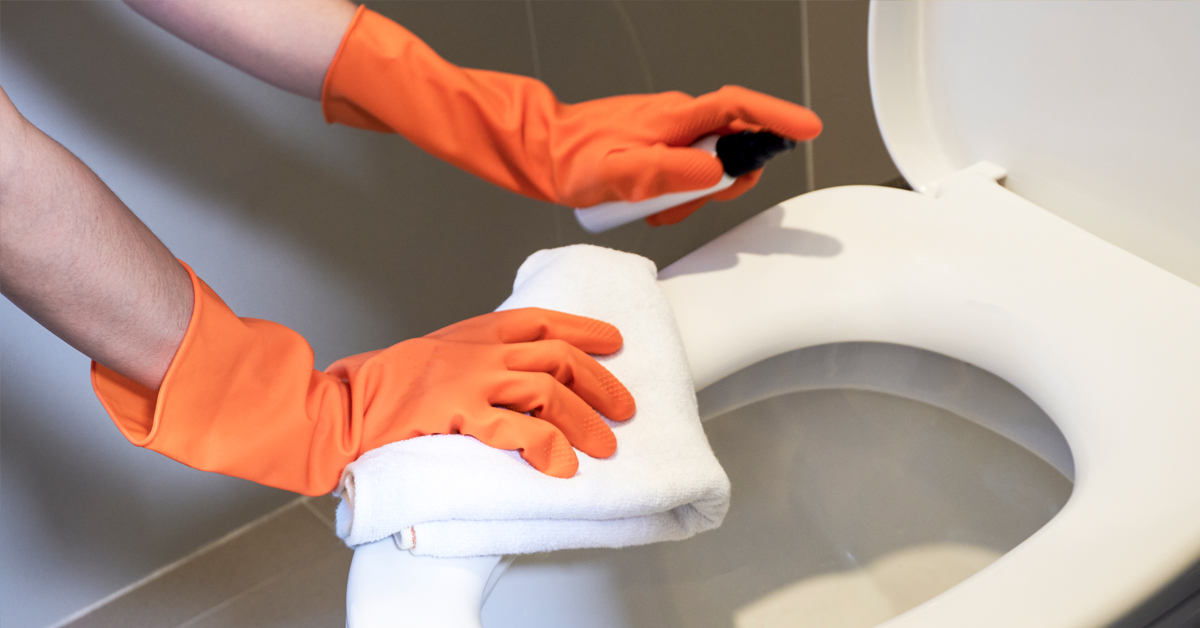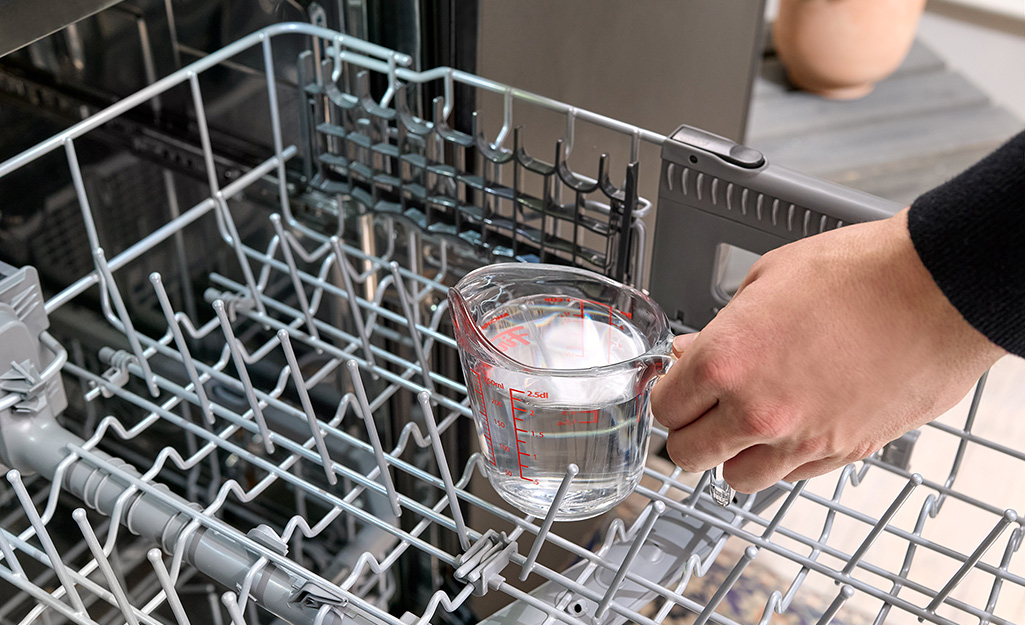Many different kinds of mold and bacteria can appear in your home or workplace. While most are harmless, some can make the inhabitants very sick. And no mold or bacteria is pleasant to be around. Long term, most molds can cause respiratory stress and worsen allergy symptoms, so it’s important to get rid of them when they do appear.
Our cleaning Pros have seen it all, and have some top tips for getting rid of different kinds of mold. In this post, they share their secrets to identifying and tackling pink mold. Learn what pink mold is, what causes it, and how to get rid of it now!
What is pink mold bacteria?
Pink mold isn’t actually a mold at all. It’s a type of very common airborne bacteria. It’s found all over the world and just loves to hang out in dark, damp places indoors. In most houses, pink mold appears as a slimy buildup, and it might not be pink at all. The color of pink mold comes from the temperature of the room and can vary from orange to bright red.
The bacteria that cause pink mold is called Serratia marcescens. It was first identified in Italy in 1819. Today, pink mold is a common sight in bathrooms and other damp places. It’s also responsible for 1.4% of hospital-acquired infections in the US. Pink mold bacteria feed off fats like those found in the residue of soap and shampoo.
Is pink mold dangerous?
In humans, pink mold is more of a nuisance than a danger, although it can cause some nasty infections. Many of these happen in people who are already immunocompromised, which is why pink mold causes lots of hospital-acquired infections. The most common sites of pink mold infections are in the urinary tract, respiratory tract, eyes, and open wounds. This can lead to UTIs, pneumonia, conjunctivitis, and tear duct infections.
For most people, pink mold is relatively harmless, but it’s still important to get rid of it as soon as you notice an outbreak. Even people who are healthy and have a strong immune system can develop pink mold allergy symptoms. These include:
- Sneezing
- Runny nose
- Congestion
- Itching or rash
- Dry, scaly skin
- Eye irritation
- Coughing
- Worsening asthma
Long-term exposure to any mold or bacteria is bad for your health, and that can put you more at risk of serious side effects.
How to kill pink mold
If you’ve spotted pink mold in your bathroom, don’t panic. You can kill it with simple household cleaning products. The best product to use is bleach. Bleach can kill pink mold bacteria, and also tackle any stains it leaves behind.
Step 1: Identify the extent of the pink mold infestation
Step 2: Use protective clothing like rubber gloves, a mask, and glasses
Step 3: Make a solution of 1.5 cups bleach to 1 gallon of water
Step 4: Use a sponge or spray bottle to apply the solution liberally to the mold
Step 5: Let the solution sit on the mold for 1 hour
Step 6: Use a scrubbing brush to remove the mold
Step 7: Wash down the surface with clean water and dry with a microfiber cloth
This solution will work on most common surfaces, like baths, faucets, and bathroom tiles. If you notice pink mold on your shower curtain, follow our Pro tips on how to clean a shower curtain to get rid of the mold.
To prevent pink mold from returning, make sure to stay on top of your cleaning routine. Remove any soap scum or residue regularly, and consider spraying the affected area with white vinegar every month or two. Vinegar is effective at preventing pink mold and should shield your home from a repeat infestation.
Pro Tip: Learn how to get rid of other kinds of mold in your home!
PINK MOLD LOCATION |
HOW TO TREAT PINK MOLD |
Bathroom (bath, shower, etc.) |
Wash with bleach OR white vinegar |
Toilet |
Flush with bleach |
Humidifier |
Soak in white vinegar OR hydrogen peroxide |
Dishwasher |
Run a cycle with white vinegar |
Food |
Discard food and find the source of the mold |
How to treat pink mold in a shower
Pink mold is so common in showers that it’s often called “pink shower mold.” This is the most likely place to find an outbreak in your home. To get rid of it, follow the steps above to clean away the mold with bleach.
If you don’t have bleach or don’t want to use it in your shower, you can also treat pink mold with white vinegar.
Step 1: Make a solution of 50/50 warm water and white vinegar
Step 2: Apply to the pink mold using a sponge
Step 3: Let sit for half an hour
Step 4: Use a brush to scrub away the pink mold
Step 5: Flush the area with clean water
Step 6: Spray down the shower with a light coat of white vinegar and allow to dry
Prevention is better than cure, so here are some Pro tips on preventing pink mold in your shower.
- Dry down the shower after use with a squeegee, avoid standing water
- Wash your shower curtains regularly (every 4-6 weeks)
- Turn on your bathroom ventilator and allow it to run after a shower until the excess humidity has gone
- Leave your bathroom door open when the room isn’t in use to allow air to circulate
- Repair any leaks or drips as soon as you notice them
- Consider using shower curtain liners treated with an antimicrobial additive
How to treat pink mold in a toilet
Your bath and shower aren’t the only places pink mold can appear. The good news is, it’s easy to treat pink mold in a toilet.
Step 1: Add ¼ cup of bleach to the toilet bowl and leave for 30 minutes
Step 2: Add an extra ¼ cup of bleach to the cistern tank and leave for 30 minutes
Step 3: Use a brush to scrub any visible pink mold away
Step 4: Flush the toilet several times to remove any last traces of bacteria
Step 5: Wipe down the seat and handle with a bleach-based disinfectant wipe
Pro Tip: Bleach is not an effective cleaner for most molds, but it is effective at treating pink mold. That’s because pink mold is actually a bacteria and not a true mold!
How to treat pink mold in a humidifier
Another place you might spot pink mold is inside a humidifier. Pink mold loves the damp, dark atmosphere. Our Pros don’t recommend using bleach inside humidifiers. Remember anything that goes in there can end up aerosolized and breathed in by anybody nearby. Bleach can also leave an unpleasant odor behind that will make the whole room smell like chemicals. Instead, follow these tips to get rid of pink mold in a humidifier.
Step 1: Unplug the humidifier
Step 2: Remove the tank and fill with a 50/50 mix of water and white vinegar, let sit for 30 minutes
Step 3: Disassemble any other removable parts and soak in the same water and vinegar solution
Step 4: Use a brush dipped in the water and vinegar solution to scrub the interior of the humidifier
Step 5: Use plain water to clean the inside of the humidifier and rinse the removable parts
Step 6: Dry all the parts and reassemble the humidifier
Proper maintenance is important for keeping your humidifier clean and free from pink mold. Follow our Pros’ tips on cleaning and maintaining your humidifier.
Don’t like the smell of white vinegar? You can also use 3% hydrogen peroxide instead. Just use 50/50 peroxide and water as a cleaner. Don’t mix hydrogen peroxide with white vinegar, as this can create peracetic acid. Peracetic acid is an irritant that can harm your skin, eyes, and lungs.
How to treat pink mold in a dishwasher
Chances are if you discover pink mold in the dishwasher, it hasn’t been run for a while. First, check the filter to remove any food debris that the mold could be feeding on. Then fill a dishwasher safe mug with a cup of white vinegar and place it, upright, on the top rack. Run a normal cycle with hot water and let the vinegar do the cleaning for you!
Pro Tip: Learn how to clean a smelly dishwasher!
How to treat pink mold on food
Although pink mold prefers wet environments like bathrooms, you could find it living on foods like bread and dairy products. If you find pink mold on any food, throw it away. It isn’t safe to eat, even if you cut off the moldy section.
Sometimes mold gets onto food somewhere in the manufacturing or shipping process, and it’s just bad luck. But if you regularly find pink mold on food, look for the underlying cause. This could be a leak where you store your food, or your fridge isn’t maintaining a low enough temperature. Finding and resolving the underlying cause should get rid of your mold problem.
When to call in the Pros to deal with pink mold
While most pink mold outbreaks can be safely treated without expert help, sometimes you need to call in the Pros. Call for expert help if:
- You have medical conditions that make you at risk of severe health effects from mold
- The area of mold is bigger than 5 square feet
- There is mold in your HVAC system
- You can smell mold but can’t find it
- The mold is black
